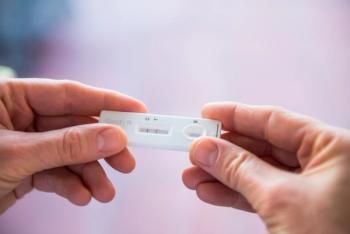
Insurance status a barrier to desired sterilization
Medicaid patients are less likely to receive sterilization at time of cesarean, and the reason may surprise you.
For women interested in permanent sterilization, admission to give birth presents a unique opportunity to complete the procedure. However,
Methods
The secondary analysis of a single-center cohort examined 8,654 postpartum women from 2012 to2014. Of them women, 2,205 (25.5%) underwent cesarean delivery. The authors analyzed insurance by comparing Medicaid with private insurance. The reason for sterilization noncompletion and
validity were recorded. The primary outcome was sterilization at the time of cesarean delivery. Secondary outcomes included postpartum visit attendance, outpatient postpartum sterilization, and subsequent pregnancy within 365 days of delivery.
Findings
Included in the analysis were 481 women. Seventy-eight of 86 (90.7%) women with private insurance and 306 of 395 (77.4%) women with Medicaid desiring sterilization underwent the procedure at time of cesarean delivery (relative risk [RR]0.85, 95% CI 0.78-0.94). Following multivariable logistic regression, gestational age at delivery (RR 1.02, 95% 1.00-1.03), adequacy of prenatal care (RR 1.30, 95% CI 1.18-1.43) and marital status (RR 1.09, 95% CI 1.01-1.19) were associated with achievement of sterilization at time of delivery.
The most common reason for sterilization nonachievement at time of cesarean delivery was not having a valid, signed Medicaid sterilization form. That was the reason that sterilization was not performed on for 64 (66%) women who wanted it. The second most common reason (n=10) was a surgical complication (adhesions). Of the women who did not receive sterilization at time of delivery, 15 (15.5%) patients had a subsequent pregnancy during the study period and all of them were on Medicaid.
The authors found that sterilization during cesarean delivery was not associated with less frequent postpartum visit attendance (P= .69, RR 1.02, 95% CI 0.93-1.12). Rates of outpatient postpartum sterilization were similar among those with Medicaid compared with those who were privately insured (P=.05, RR 3.34, 95% CI 1.14-9.71).
Conclusions
The authors believe their findings indicate that policy barriers to tubal ligation are still present and have a negative impact. Women with Medicaid insurance received sterilization at the time of cesarean delivery less frequently than their privately insured counterparts, most commonly due to the absence of a valid Medicaid sterilization consent form, as well as adhesive disease. The authors suggested future revisions to the Medicaid sterilization policy be both evidence-based and patient-centered.
Newsletter
Get the latest clinical updates, case studies, and expert commentary in obstetric and gynecologic care. Sign up now to stay informed.
















